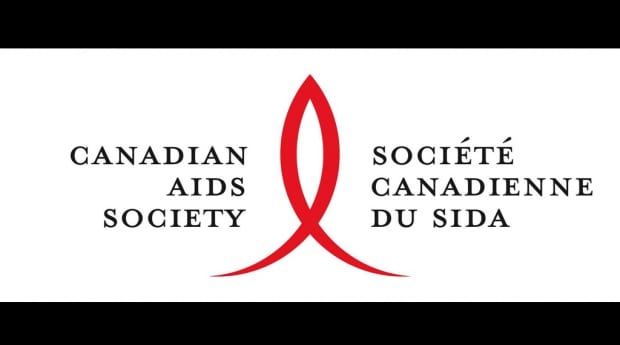<The Canadian AIDS Society crisis (Part 2)
After the Canadian AIDS Society (CAS) board announced that Gary Lacasse, the chair of the board of directors, had been immediately hired to replace the outgoing CEO, three CAS member organizations resigned.
The Peterborough AIDS Resources Network (PARN), HIV/AIDS Regional Service (HARS) and the AIDS Committee of Toronto (ACT) all left CAS shortly after the announcement.
“It was a decision that was made after a very long time,” says Kim Dolan, executive director of PARN.
Over the last seven months, Dolan says that PARN was one of many CAS members that were encouraging the group’s leadership to engage more openly.
PARN’s board had recently rejected a motion to leave CAS in September, in part because they wanted to see how CAS’s new board would perform.
“The chair of the board Gary Lacasse had spoken with confidence at the annual meeting that the board could really turn things around,” Dolan says.
But Lacasse’s appointment as executive director was too much for PARN. Dolan described the act as lacking “due process.”
“The more typical thing that we would see is that a board would appoint an interim-executive director to provide them time to design a process that’s fair, transparent, inclusive and provides the best possible group of candidates to consider for the job,” she says.
Christopher Thomas, communications coordinator for ACT, says that the letter from CAS staff summarized many of the concerns that ACT had been having over the past several months.
“We’re not antagonistic towards the idea of CAS,” Thomas says. “We certainly want to support a national organization, but we weren’t finding any of our concerns being meaningfully addressed. And so withdrawing our membership was kind of our last tactic.”
ACT’s departure was an especially serious loss for CAS — the organization was a founding member and is one of the most prominent AIDS service organizations in the country.
“Our decision to leave came only after several attempts at drawing their attention to the severity of the situation, so I think the ball is in their court.”
HARS also made the decision to leave CAS.
“I think the idea of having a national voice is what we need and want, so CAS was that for a lot of years,” says John MacTavish, executive director of HARS. “It did a good job of being our voice and listening, but it just hasn’t been that way for a while.”
MacTavish says that HARS would consider rejoining CAS if the organization’s leadership changed how it operated.
“If there is a change and we see things moving in a more positive direction, we would definitely become a member again,” he says.
Dolan says that PARN would support rebuilding CAS and starting anew.
“We hoped that we would be able to help CAS from inside as a member,” Dolan says.
Both Dolan and Thomas point to how CAS dealt with the issue of HIV and hepatitis C funding as endemic to the problems of the organization.
The Canadian government has been moving to pool funding for HIV and hepatitis C. Some AIDS services organizations worry that this will not allow them to adequately provide services for people unless there was a large increase in funding.
“CAS was struggling like many of our organizations on how do we respond to our funder’s direction to include hepatitis C in our mandate,” Thomas says.
The situation came to a head this summer at CAS’s annual general meeting in June, where the leadership presented a strategic plan that would have seen CAS become a national voice for both the HIV/AIDS and hepatitis C communities.
“That was an amalgamation that we had seen previously suggested by the federal government, so the move was a little bit odd to see CAS taking that torch from them,” Thomas says.
“What happened from my perspective is that CAS leadership didn’t allow for good thorough debate that would land in decisions,” Dolan says.
Dolan adds that CAS members might have decided to include hepatitis C in their mandates, but they weren’t able to have that discussion transparently.
“Maybe we would have gotten to a similar place, but we didn’t have the opportunity,” she says.
Thomas says that executive directors of many other AIDS service organizations are also sympathetic to the concerns raised by CAS staff in their open letter.
“I don’t have a crystal ball, but it seems to be a trend that more and more organizations are withdrawing,” he says.
Despite the decision to leave CAS, Thomas believes there have been a number of positive developments in recent months.
He points to the creation of the Canadian Positive People Network, an organization made up of HIV-positive people that seeks to directly represent their interests.
“It has emerged as a really clear alternative to CAS as it is deliberately grassroots and very principled in its advocacy,” Thomas says. “So I think there’s a lot of potential to grow that organization.”
Thomas also hopes that the recent change in federal government could lead to a change in how Canada approaches HIV/AIDS.
“We lobbied throughout the election to have a renewed HIV strategy,” he says. “So it is certainly an opportunity for us to restart that conversation within the sector.”
“I think it’s a pretty great and optimistic time despite what’s been happening internally.”
Editor’s note: A previous version of this story incorrectly identified HARS as a Hamilton-based organization.

 Why you can trust Xtra
Why you can trust Xtra


